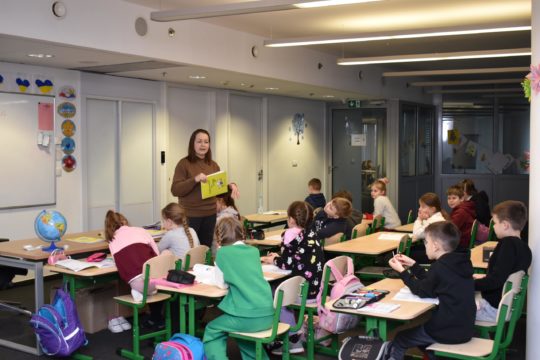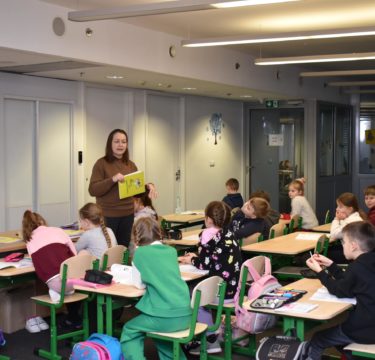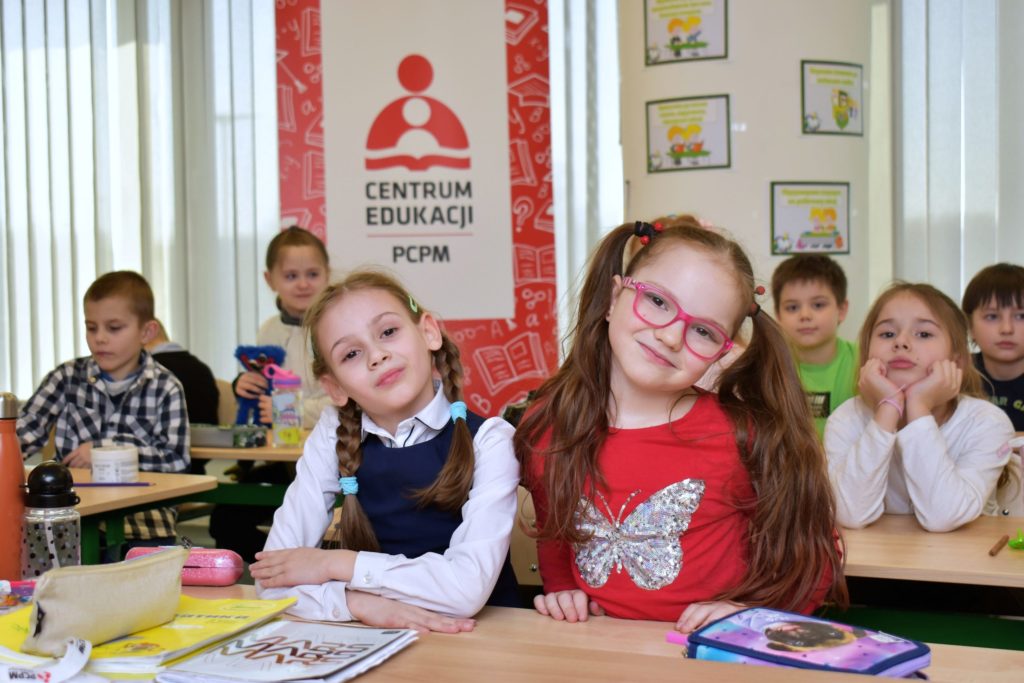Alongside, not with each other: Ukrainian students in Polish schools


Polish schools face a challenge far beyond everyday lessons — the integration of thousands of Ukrainian students. For many of these students, the Polish education system often becomes a source of additional challenges after years of education disrupted by the pandemic and the outbreak of a full-scale war. Help can come from Ukrainian teachers and intercultural assistants, as detailed in the study “Support for the integration of refugee children and youth from Ukraine.”
Pandemic, war, school in a foreign country
Children who fled the war are often traumatized and withdrawn, with their psychological needs frequently unmet. Research by the Educational Research Institute (IBE), conducted on a representative sample of about 1,200 individuals, shows that Ukrainian students rate their relationships with peers in Poland worse, have lower self-esteem, and more often feel lonely.
Paradoxically, despite often having a broader curriculum in Ukraine, their grades in subjects like mathematics are worse, indicating untapped potential and difficulties adapting to the new educational environment.
Diploma worth its weight in gold and prejudices
The situation is no easier for Ukrainian teaching staff who could significantly support the Polish system. A key barrier is the complicated and costly process of diploma nostrification (recognition). The cost, ranging from 3,200 to 4,685 PLN, is prohibitive for many. Additionally, the lack of uniform procedures across universities causes confusion and discouragement.
Low salaries in Polish education and non-recognition of previous professional experience from Ukraine add to the problem. Language barriers and prejudices also exist, including Polish parents’ concerns about Ukrainian teachers’ accents and even job offers requiring Polish citizenship.

Intercultural assistants are needed urgently
Hope lies in the role of intercultural assistants (IAs). The study’s results clearly emphasize their invaluable help. They act as a bridge between two cultures, providing support to Ukrainian students (23.8% of Ukrainian respondents indicated this), reducing language barriers (22.3%), and facilitating communication with parents (21.2%). They help children cope with trauma and adaptation stress and support relationship building. Unfortunately, their future is often uncertain. It is necessary to ensure stable employment through contracts and better working conditions. Without them, the burden of integration will fall solely on schools, which are already struggling.
Systemic solutions
There is no doubt that deep systemic changes and proper funding are needed. The Ministry of National Education (MEN) should immediately introduce regulations allowing recognition of Ukrainian teachers’ work experience and professional background in the nostrification process and create hybrid pathways for completing qualifications. Local governments, as school authorities, have a key role, primarily by financing salaries (about 27% of indications) and language courses (about 18-20%). Equally important is the unification of nostrification procedures.
End of ad hoc aid and the question of what next?
The initial “collective enthusiasm to help” from 2022, often spontaneous and temporary, is giving way to a return to “normality,” — unfortunately understood as monoculturalism. In the absence of systemic solutions, schools revert to established patterns, causing Polish and Ukrainian students to function “side by side instead of with each other.” This dangerous trend leads to parallel worlds within one school. It is essential to prepare the entire school community — staff, students, and parents — to welcome Ukrainian workers and students. This means ongoing integration activities, training, and anti-discrimination workshops.
Are Polish schools and policymakers ready to abandon thinking of the “Ukrainian problem” in favor of building a truly multicultural and open education system? This question remains open, especially now.
More about the challenges can be read in the full report “Supporting the Integration of Ukrainian Refugee Children and Adolescents in Poland”.